Supernatural Milan
Supernatural Milan
Beatrice Lugano
Available for hire
Milan is often considered the capital of Fashion and Made in Italy, and most of the time tourists do not focus on visiting the whole cultural and artistic heritage that my beautiful hometown offers.
It also has to say that, compared to Rome, Milan's treasures are more hidden and even those who are born here often don't know all the beautiful secrets that this incredible city offers.
Beyond culture and art, many years ago, I had the privilege to research the legends and lores of this ancient city, to create a guided tour for an event that summoned many healers and therapists.
The tour can take from around 4 hours, depending on how much time you decide to spend in any location.
You can also decide to split the tour in two days.
Updated ago
1
Share
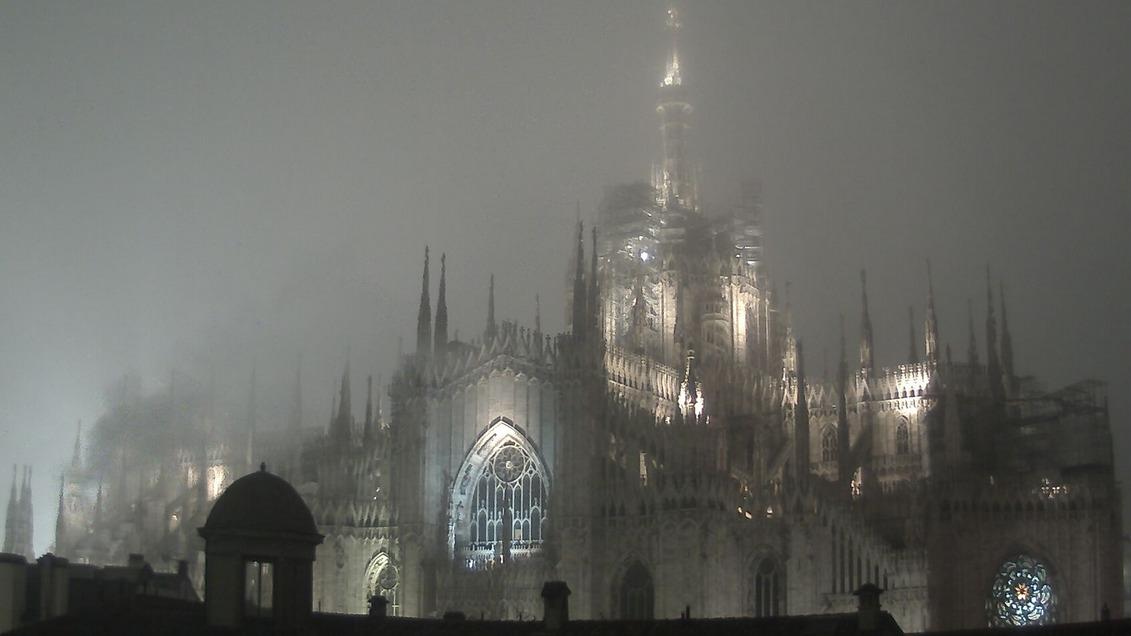
The veiled dame

Duomo di Milano
@beatricelugano
Let's start big 😃
The Duomo di Milano deserves a visit on its own because it is so full of history and art.
But anyway, it can be a good point to start our itinerary.
Many lores have been told about this beautiful building, from its construction to more modern days.
One of the most peculiar is that the cathedral was built over an ancient Celtic temple dedicated to the goddess Belisama, later associated by the Romans with Minerva.
Milan was founded by the Insubrians, a Celtic tribe that later fell under the Roman empire in the year 223 BC.
The construction of the Cathedral began in the year 1386 and officially finished in the year 1965. A popular say in Milan is to refer to something comparing it to the "fabbrica del Duomo" (the construction company of the Duomo) meaning something that has no end.
An interesting lore about the construction of the cathedral says that the Devil himself is involved.
In the year 1386 it is said that the Lord of Milan, Gian Galeazzo Visconti receives a visit by Satan who tells him he will bring his soul to hell unless he builds a cathedral full of the images of the devil.
Almost 500 years later the will of the devil is fulfilled: beyond the 3400 statues of saints and of important figures, the Duomo hosts 96 gargoyles depicting demons and drakes.
The other popular say connected to this lore is that Milan is so busy that the productive people from Milan have found a job even for the demons: they are all outside of the Duomo letting the rainwater flow!!
Another popular legend connected to the Duomo is the one about Carlina, a young woman from Como who married her husband dressed in black as tradition from the feudal time. After the marriage Carlina, dressed in black, wanted to visit the Cathedral with her husband but, when she arrived on the roof she got scared by the statues and, since there was a thick fog, she lost the way and fell down. The body was never found.
The ghost of a lady dressed in black can sometimes be seen in the pictures of recently wed couples who pose in front of the Cathedral.
I finish this long paragraph about the Duomo di Milano with some curiosities about the "Madonnina", the statue that towers the cathedral.
The Madonnina was commissioned by Empress Maria Teresa of Austria in 1776 and became immediately the symbol of the city. The Milan Cathedral is the only one in the world that has a Madonna on it top and this Madonna is the only one with a longsword.
The Madonna is not looking in front of her but on a side direction, precisely in the direction of the mountain complex where the marbles that built the Cathedral came from, the Mount Moro, Ornavasso and going straight a swiss town named Briga, as Saint Briga or better the Goddess Briga -Belisama of the Insubrian tribes.
So the Madonnina with the longsword can remind us to the ancient goddess, but this is just a supposition 😃
Add to
Details
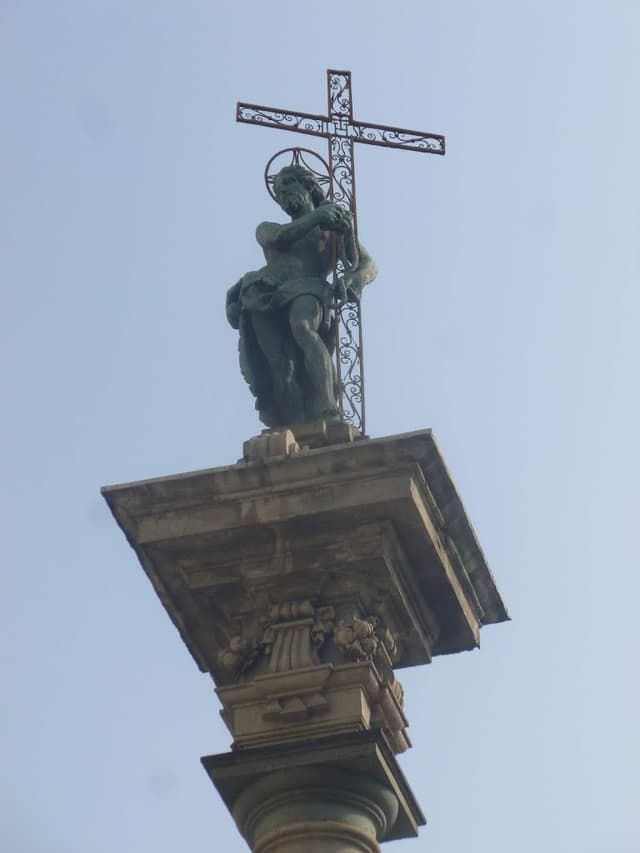
Verziere Column
@beatricelugano
We leave the cathedral and walk past Piazza Fontana, we arrive at Largo Augusto. This part of Milan once hosted the big market of fruit and vegetables and was called as well "Verziere" which literally means the cabbage seller.
There, in the year 1673, the column with the Christ Redeemer was put as a gratitude sign that the plague was over.
The legend says that in the beginning, the Christ was looking left, in the direction of the Verziere and the vicolo of San Bernardino dei Morti.
But three months later...surprise! The Christ was now looking in the opposite direction, towards via Durini.
Many rumors were born to explain this uncommon situation, the most famous was the legend of Barbarinetta.
Barbarinetta was probably the most beautiful girl in the whole Verziere suburb, she was living with her parents in a house on the corner of Via Durini, at the corner of the Verziere.
Three months after the column was inaugurated, she was coming home late in the evening with her father, after attending a wedding. They ran into a group of malicious guys who wounded and robbed the father and kidnapped Barbarinetta.
They brought her to a farm outside of the city and when the situation was getting worse, when a young knight who was passing by heard her screaming, so he broke into the den and saved her.
Being a beautiful young man, Barbarinetta fell in love with him and he was with her.
Unfortunately, he was wanted for a crime and soon he was caught and sentenced to death exactly under the statute of the Verziere.
She saw the building of the scaffold from her balcony and when it was time for her beloved to die, she could not stand the pain and threw herself out of the balcony.
That was the moment when the Christ turned his head.
At the moment, it is not possible to look at the column as it has been removed to allow the building of the 4th line of the Subway, but in the removal of the column there has been found another column inside the actual one, much more ancient, and this is visible now.
Add to
Details
At the moment it is not possible to see the Verziere Column as it has been disassembled to allow the building of the 4th line of the Metropolitan Subway.

Santuario di San Bernardino alle Ossa
@beatricelugano
At less than 5 minutes' walk from Verziere, we can find the interesting Sanctuary of San Bernardino alle Ossa, built side by side with the Basilica di Santo Stefano Maggiore.
The Sanctuary was finished in the year 1695 and was built over a small church and before a cemetery.
A confraternity named the Disciplini was in charge of decorating the sanctuary and they decided to use the skulls and bones of the existing ossuary.
The style of the sanctuary is baroque, with interesting frescoes and a statue of a Madonna and a dead Christ but the collocation of the skulls and bones designing a cross and other decorative motives are the true peculiarity of this place.
A legend that began in the XVII century says that these bones were from the Christian martyrs who died battling the Arian heresy when Sant Ambrogio lived.
But the official history tells us that these bones are coming from different places and different times. starting from the dead of the old hospital that was built near the church, convicts, and priests who worked in the nearby church of Santo Stefano.
Another popular legend says that on All Saints eve the little skeleton of a girl located on the left of the altar becomes alive and takes the other recomposed skeletons to dance in the courtyard in front of the Sanctuary.
The neighbors swear to hear the sound of the bones dring this night.
Add to
Details
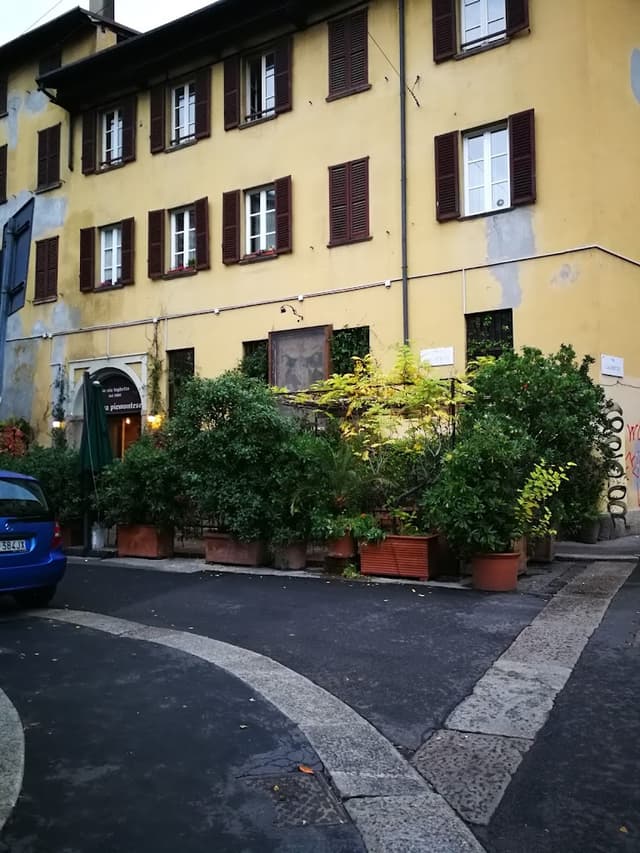
Via Laghetto
@beatricelugano
Not far from San Bernardino, just a couple of minutes of walk away, there is the small Via Laghetto, famous for being the home, at number 2, of the head of the witches of Milan, her name was Arima.
She used to fly on her broom with her fellow witches to Piazza Vetra.
She became famous for her feasts and banquets that hosted many people. It was the period of the plague but nobody was getting sick in Via Laghetto so the people started to say that it was because of the witches.
The truth is probably that Via Laghetto was the point where the marbles for the construction of the Duomo were unloaded and the fine marble dust was a good repellent for the ticks that were the number one reason for the spreading of the plague.
This is the rational explanation 😄
Add to
Details

San Giovanni in Conca
@beatricelugano
Milan is a very pragmatic city. Not far from Via Laghetto, heading south, we can find a crypt in the middle of a road junction, specifically in Piazza Missori.
It is the case of the crypt of San Giovanni in Conca, what remains from the previous Basilica built in the 4th century, rebuilt in the 11th century, destroyed by Federico Barbarossa in 1162.
Reconstructed in the 13th century, it became a private chapel for the reigning Visconti.
In 1531 Duke Francesco II Sforza donated it to the Carmelites and served as an astronomical observatory in the 19th Century.
The Austrians deconsecrated it and it was closed by the French in the late 18th century.
In 1949 was demolished but thankfully the crypt was preserved.
The crypt is a great example of Templar heritage and Romanic style. It is said that it held the remains of the three Mages before they were moved to Sant'Eustorgio.
It is possible to visit on specific times and dates, it is a good practice to check the website that I link here underneath.
Add to
Details

Corso di Porta Romana, 3
@beatricelugano
Close to the San Giovanni in Conca crypt, at the beginning of the popular street Corso di porta Romana, specifically at number 3, you can find a lovely baroque house, Palazzo Acerbi, that was said to be the Milano residence of nonetheless than the Devil himself.
During the infamous plague so well depicted by Alessandro Manzoni in his "Promessi Sposi", the owner of the house, the Marquise Ludovico Acerbi, was often hosting opulent parties with dozens of guests.
None of his guests nor he were ever sick or worse died of the plague, so the rumors in Milan quickly spread that he was the Devil because it was impossible that a mortal human could ever remain healthy while many people in the whole city were dying every day.
If you are lucky, you can see the main door open and the beautiful courtyard inside.
If you look up standing underneath the main entrance you will see a demon face staring back at you.
Add to
Details
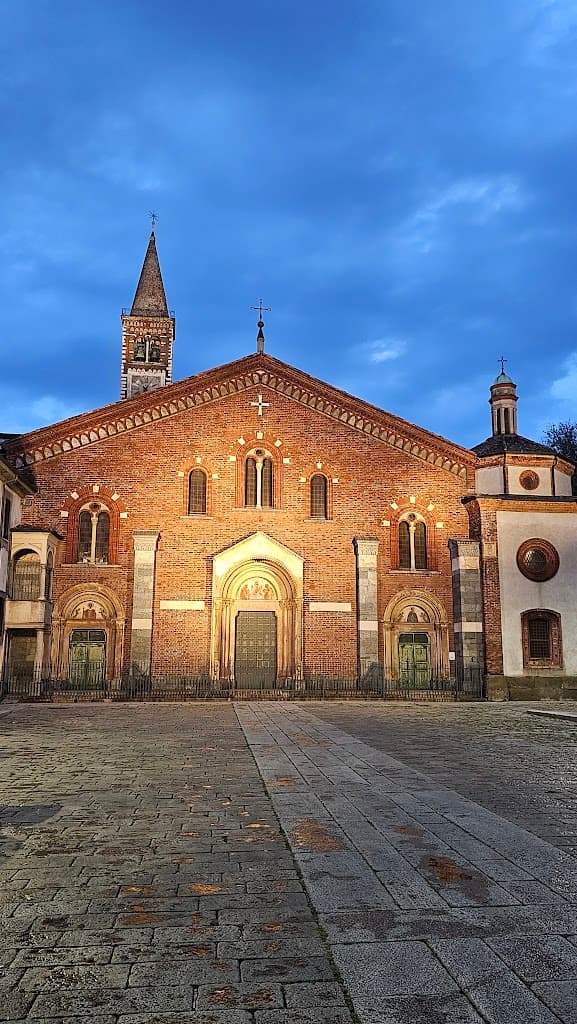
Basilica di Sant'Eustorgio
@beatricelugano
To reach Basilica di Sant'Eustorgio from Corso di Porta Romana, I suggest you walk to Via Torino at the height of Via Palla and take the tram number 3 direction Gratosoglio until the stop Piazza XXIV Maggio. You will pass beside the beautiful Colonne di S.Lorenzo.
From Piazza XXIV Maggio, you walk about 1 minute and you reach the Basilica.
The first impressive legend is that this church holds the remains of the Three Kings that visited baby Jesus bringing gifts when he was born.
It is said that Bishop Eustorgio received the Three Kings' relics around the year 350 AC from the son of Constantin, Costanzo, in Constantinopole and decided to build the church that later got his name to preserve the relics.
On the top of the bell tower, a star with 8 points was the sign for the pilgrims that in that church they could prey the Three Kings.
During the XII century, Fredrick Barbarossa took the relics away and put them in the Köln Cathedral, not all but only a part of them only came back to Milan in 1903 after many negotiations between Germany and Italy.
Not far from the Church, Specifically in Piazza Sant'Eustorgio at the number 8, there is a house with an inscription that says that inside is preserved the first baptismal font.
It is said that Saint Barnaba was baptising the first Christians outside the roman walls to avoid the sight of the pagan statues that were abundant inside the city.
He found this spring that was said was prodigious and started to preach Christianity and baptise the believers.
The baptismal font fell in disuse after the XIII century and was used as lavatory, only in the year 1623 Federico Borromeo decided to build a church later demolished in the year 1844. Today, the baptismal (and probably healing?) font is preserved in a private house and you will be able only to see the sign on the wall were a part of the story is told.
Continuing with other traditions, it is imperative to mention Cappella Portinari, to visit this interesting example of the Renaissance that comprehends masterpieces from Vincenzo Foppa that depict scenes from Mary's life and from the life of Saint Peter Martyr, a Saint particularly dear to Pigello Portinari, the banker who commissioned the chapel.
The decorations of the chapel was hidden under 7 layers of plaster during the terrible plague of 1630 and only restored in 1952.
On the right side there is a peculiar fresco that can be noticed:
A Virgin Mary holding a baby Jesus both with devilish horns.
This scene refers to the Miracle of the False Madonna: Saint Peter Martyr is celebrating the Mass when the devil decides to take the looks of the Virgin but forgets to hide the horns, the Saint exorcises him by showing the consecrated host.
In the middle of Cappella Portinari you can see the beautiful masterpiece of gothic art: the ark that holds the tomb of Saint Peter Martyr. The ark was built by Giovanni di Balduccio in 1336 and is enriched by statues and reliefs that depict the life of the saint and allegories like Faith, Charity, Hope, etc.
The legend says that in the XIV century Archbishop Matteo Visconti asked Balduccio to create a beautiful ark to hold the remains of the Saint but he wanted to hold the head close to him. From that day the archbishop started to suffer from bad headaches that lasted until he brought back the head near the body of the martyr.
Now you can see the head on the left of the chapel.
Every last Sunday of April, every year, people can come to Sant'Eustorgio, to "battere la testa" (hit the head) on the marble arch of the ark to prevent headache. The head of Peter is exposed in a crystal case and the worshippers can rub an object on it with the same purpose.
This church and the surroundings offer really interesting stories and are definitely worth a visit, even if there is a ticket to pay to enter Cappella Portinari (€ 12).
Add to
Details
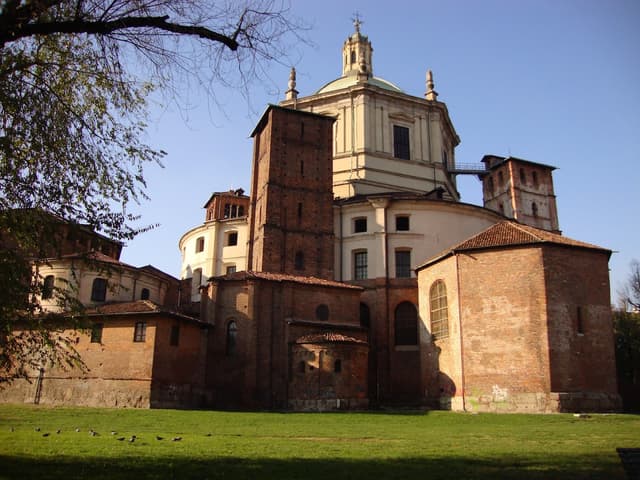
Piazza Vetra
@beatricelugano
Taking a stroll through the Parco delle Basiliche on the back of the Basilica di Sant'Eustorgio, now called Parco Giovanni Paolo II, you can arrive in Piazza Vetra on the back of the Basilica of San Lorenzo Maggiore and the Colonne di San Lorenzo.
This place has been the theater of unfortunate events: from the year 1385 Piazza Vetra was the place where the condemned of witchcraft were burnt at the stake.
In 1385 was the turn of Gaspare Grassi da Valenza as a warlock.
In 1390 Sibilla Zanni and Pierina Bugattis were accused of being a part of the secret society of Diana, participating in secret meetings that clearly had a pagan heritage.
The last stake happened on 22nd November 1641 after hundreds of men and women died in Piazza Vetra.
At the end of the 19th century and continuing in the 20th, Piazza Vetra was a place of micro criminality, home of the "Banda della ligèra" a group of criminals who became very popular and that sometimes were associated with modern Robin Hoods.
At the moment the park has been cleaned up but it is always good to keep the eyes open, especially if you stroll in the park at night. 😉
Add to
Details
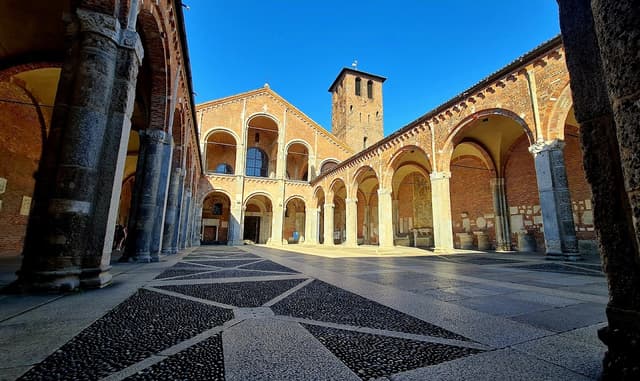
Basilica di Sant'Ambrogio
@beatricelugano
From Piazza Vetra, taking a 15-minute walk, more or less, you can arrive at the Basilica di Sant'Ambrogio.
Sant'Ambrogio is the protector of Milano and many legends remind him.
The Church is a great example of Romanesque style and offers plenty of points of interest,
I will mention the two most interesting ones.
The first one is a column at the entrance of the Basilica, it is called the Devil Column. It is said that one day the Devil was tempting Saint Ambrogio in front of the Church and the Saint reacted by kicking him in the butt.
The Devil ended up with his horns stuck in the column and could not move. It stayed like this for one day and later disappeared leaving just the two holes as a gate to hell.
It is said that if you listen with your ear close to the holes you can hear the sounds of hell and you can smell sulfur coming from the holes as well.
The second legend is about another column, this time positioned inside the church on the left side of the altar.
On the top of the column, you will see a snake made of black bronze.
The legend says that the snake was forged by Moses while he and his people were exiled in the desert and he did it to protect himself and his people from the snakes.
Some historians also speculate on the fact that this could be Nehustan, Moses' snake the one that transformed from his staff.
The popular belief is that the snake will come alive in the Apocalypse and will leave the column, to go back to Josafat valley.
So, pay attention to the snake! 😉
Add to
Details
At this point, you can decide to continue the tour to Castello Sforzesco and the other locations or split the tour into two days. You finish here the first day and you begin the second day at the Castello Sforzesco.

Sforzesco Castle
@beatricelugano
The Castello Sforzesco is one of the main attractions of Milano and it offers many tracks, both guided tours and self-paced tracks and it is worth spending a while discovering it.
I will add a link to a PDF of activities for this coming spring, mostly in Italian but with a tour in English as well.
Like any self-respecting fortress, Castello Sforzesco would be populated by numerous ghosts: these are the many ladies who lived there, including Isabella of Aragon and the witch Isabella of Lampugnano. Among the ghosts of Castello Sforzesco, the most grim story is that of Bianca Maria Gaspardone, accused of having one of her lovers killed to get revenge for the insults he received. Unmasked, the Countess of Challant was sentenced to death and beheaded in front of the Castello Sforzesco; his head was exposed as a warning and according to Milanese legends from time to time, the ghost of Bianca Maria would sip the blood of her lover killed by an amphora and then literally lose his head.
According to stories handed down for decades, all these souls in pain would manifest themselves in the Castle. The ghost of Bona di Savoia appeared several times at the square tower, that of Ludovico il Moro near the Ponticella del Duca, while at the fountain of the Lions the spirit of Bianca Sforza, and at the cloister of Santa Radegonda that of Bernarda Visconti.
Add to
Details
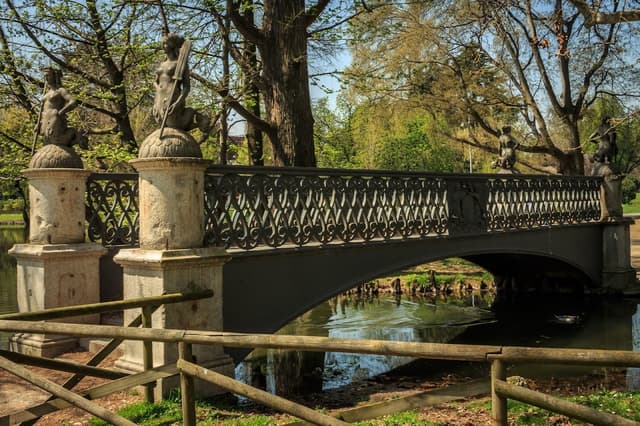
Bridge of the Little Mermaids
@beatricelugano
Not an esoteric location but nice to see, this bridge was originally created to allow the passage in Via Visconti di Modrone on the Navigli.
Once the Navigli was closed in many areas of the old town, the bridge was moved to this location in the park.
The mermaids with their prosperous curves were very popular among the young men from Milan who used to touch them before a romantic encounter to favour the good resolution.
The legend says that if a couple kisses on the bridge will be forever true to each other ❤️
Add to
Details

Parco Sempione
@beatricelugano
The park that once belonged to the Sforza Castle, in the heart of the city, the lore connected to it tells about a veiled lady that on foggy nights used to appear to young men who had the dare to cross the park, once much more savage and similar to woodland.
The difference between this lore and many other "white lady" lores around the world is that this woman appeared veiled and dressed in mourning. She usually brought the poor men into her palace, which was impossible to locate in the fog, and spent the night with them, always with the veil on.
In the morning, when the men wanted to see the face of the woman, and pulled the veil away, they uncovered a skull instead of a head.
The men ran away in horror and very often got mad after the episode.
At the end of the '800 the reports were so many that the police organized night searches to locate the woman and the palace, but with no positive result.
Some locate the palace in one of the buildings in Via Paleocapa but there was no confirmation on that.
At the moment Parco Sempione is closed at night, but you can take a stroll near the Castello Sforzesco or the Arena during the day.
Add to
Details
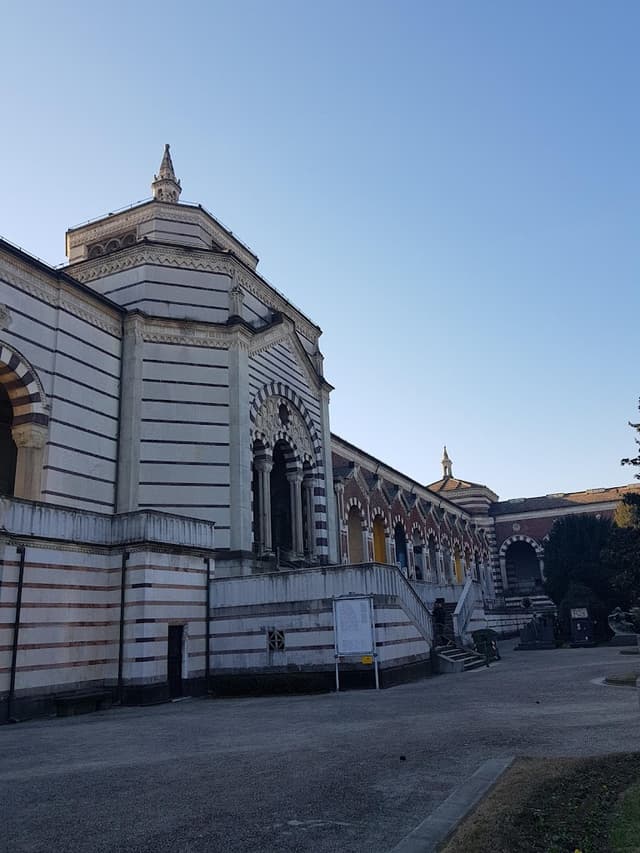
Monumental Cemetery
@beatricelugano
Exiting the Parco Sempione on the side of the Arena Civica, and crossing the Milanese Chinatown, in around 15 minutes you arrive at the Cimitero Monumentale, the most important cemetery of Milano.
There are a good number of tours that you can take at the Monumentale Cemetery to see all the famous personalities buried there or the incredible art of the tombs, but you can as well stroll around and lose yourself in the quiet and beauty of this magical place.
Add to
Details
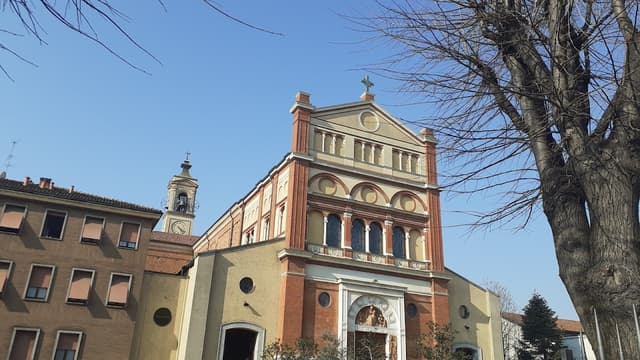
Church of Saint Mary 'alla Fontana'
@beatricelugano
We finish our tour in one of the most hip quarters of Milan: Quartiere Isola.
Here you can find Santa Maria alla Fontana. The church is interesting but what is even more interesting is the chapel that is located outside the church, on the right side of the entrance after descending a flight of stairs.
The wonderful chapel has an incredible energy, when I visited I just wanted to stay there for hours, for the incredible sense of peace that surrounded that place.
It has frescos from Bernardino Luini, one of the apprentices of Leonardo Da Vinci, but the most peculiar thing is that the chapel hosts a fountain that is said to be miraculous and, tested, has revealed the same level of vibration of the Lourdes water.
The fountain was originally a spring and a place for healing already in the Roman era, and it has maintained its reputation until now.
Test it and let me know!!
Add to
Details
With Santa Maria alla Fontana our tour comes to its end. It was a delight to take you through the places and traditions of my beloved hometown, thank you for being with me!
* * *
ABOUT THE AUTHOR
Beatrice Lugano
Available for hire
👋🏻 Hej allihoppa!
My name is Beatrice and I am an Italian 🇮🇹 living in Sweden 🇸🇪.
I left Milano 6 years ago for the Venice of the North and can't wait to show you all my favorite places to experience the true Swedish lifestyle.
Så mysig!! 🧁☕️
Here in Stockholm, I do couple and portrait photography and always help my clients (most tourists) to have a wonderful time in this beautiful city. I love giving them the best suggestions and I will do the same for you. I also love to explore the city with my family, most itineraries will be family-tailored!
Milan is where I was born and lived. most of my life, so I will share with you all my secrets about this incredible city.
My background is artistic, so I will always include some nice museums or activities to visit in my guides.
I have worked many years as a photographer on location this is why I have good experience of Egypt, the Caribbeans, Zanzibar, Madagascar, and Viet Nam.
I am a food lover too, so I will include the best spots to eat amazing food.
Can't wait to share all of this!!!
See you soon ⭐️
Explore related destinations
Read more about places in this guide
Powered by Thatch
The home for unique & authentic travel
The home for unique & authentic travel
Powered by Thatch: Where great trips are made.
© Beatrice Lugano 2025 • Help • Privacy • Terms • Copyright • Become a Seller • Seller Academy • About • Careers • Blog • Explore Places
Ask ThatchGPT
Ask ThatchGPT
Suggest a local expert to plan my trip
Suggest an unique itinerary for my Milan, Metropolitan City of Milan, Italy trip
What foods do Milan, Metropolitan City of Milan, Italy locals eat
What are some true hidden gems in Milan, Metropolitan City of Milan, Italy
Help me brainstorm trip ideas for Milan, Metropolitan City of Milan, Italy
Help me plan a family-friendly trip to Milan, Metropolitan City of Milan, Italy